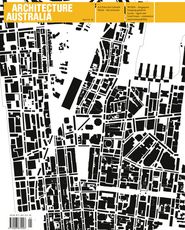
What are the best ways for emerging architects to gain the experience they need to manage a practice and successfully obtain and deliver major projects?
Thirty years ago the construction and development industries were much more straightforward, as were architectural services. Governments offered young architects cadetships and mentored experience on large projects. Young practices, with modest but respectable credentials, could move beyond standard domestic work through documentation jobs for new schools, childcare centres and grouped housing. These were readily offered by housing authorities, public works departments and bodies such as the NCDC in Canberra.
The classic model of design, documentation and contract administration was in place, which to this day remains the focus of architectural registration. Yet new patterns were taking shape. Larger and more complex projects orchestrated by groups like Lend Lease/Civil & Civic and Leightons involved assorted consultants and sometimes several different firms of architects, all managed by a project or construction manager. Procurement was no longer a simple engagement of the architect for full services from start to finish. Much became negotiable, including fees and extent of service, and the old “fee-scale” basis was disregarded.
As a result, different career paths for architectural graduates began to emerge. Bigger opportunities in the design and construction realm might be substantially unrelated to the detailed contract administration of building projects.
The Institute, reflecting on current and likely future circumstances, and on the need for a more effective transition from graduation to registration and full practice, is giving thorough consideration to this significant issue. I invited several young principals and members of EmAGN (the Institute’s Emerging Architects and Graduates Network) to respond to questions on the adequacy of current education and support. Their responses suggest that architecture schools equip students with a “method of thinking” that addresses a variety of practice issues well. However, emerging practitioners are looking to the profession – particularly support programs and the experience of seasoned practitioners – to assist their career development.
A number have benefited from mentors and would like to see the Institute facilitate a program for graduates who lack a mentor opportunity within their employment framework. This would also counter a “pervasive” culture of graduates not seeking to register because it is seen as “an obstacle that is tricky, non-transparent and hard to achieve”. They also express a pressing desire for reform of the registration process (and/or tertiary education) to reflect the broad spectrum of contemporary practice and current procurement and business approaches.
The essence of their remarks draws our attention to the need for comprehensive graduate experience prior to registration, through suitable employment, mentoring, informative talks, training sessions and facilitated networking. It suggests that the registration process needs to become a great deal more sophisticated. These are major concerns confronting all of us, Australia-wide, and must form part of a dialogue between the Institute and the registration boards, focused on uniform national registration of architects.
Finally, I offer some ideas for emerging architects during the economic and construction downturn:
- Associate with focused, energetic and persuasive individuals with a public dimension, who will seek out opportunities in a difficult market or at the slightest hint of economic recovery.
- Consider employment opportunities with stable entities such as government or universities.
- Upgrade your skill base in the down time. Do a public speaking course, study urban design to give your ideas and projects a broader perspective, pursue a business qualification. An understanding of financial issues and the commercial world will make you more eligible for a corporate role.
- Take an overseas study tour and/or pursue further education abroad.
- Consider your special interests. Could you write a book or articles of public interest? With thoughtful research and a clear message, your published texts and talks can give you recognition as an expert on a topic.
- Participate in community organizations and local politics to better understand the circumstances within which we work.
Howard Tanner
National President, Australian Institute of Architects















